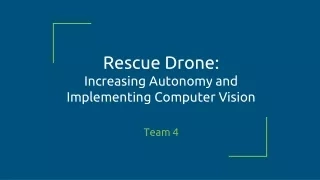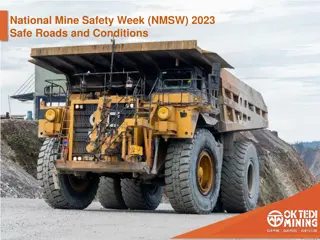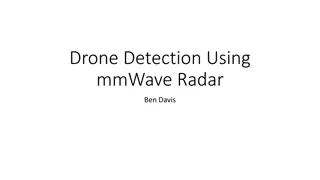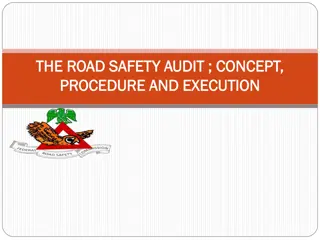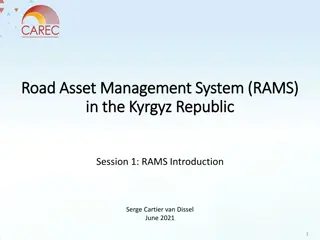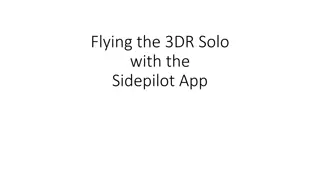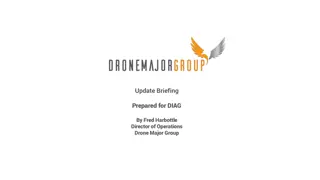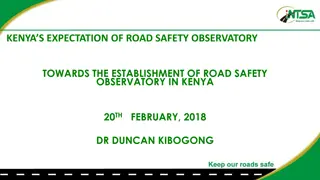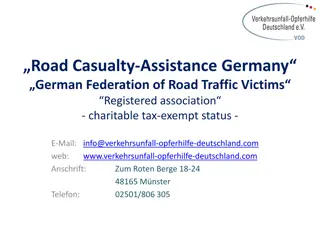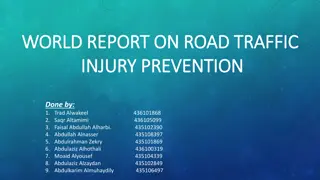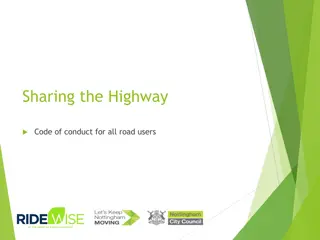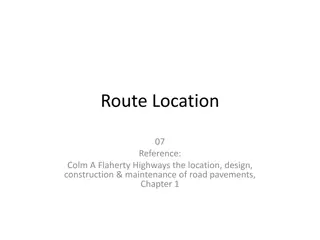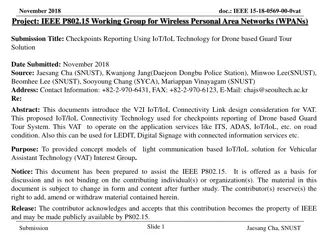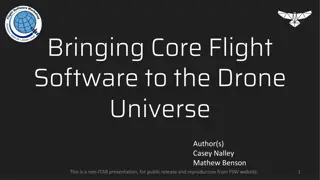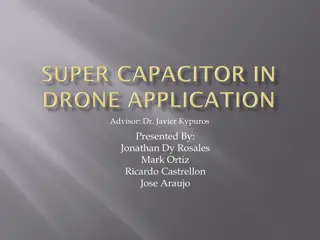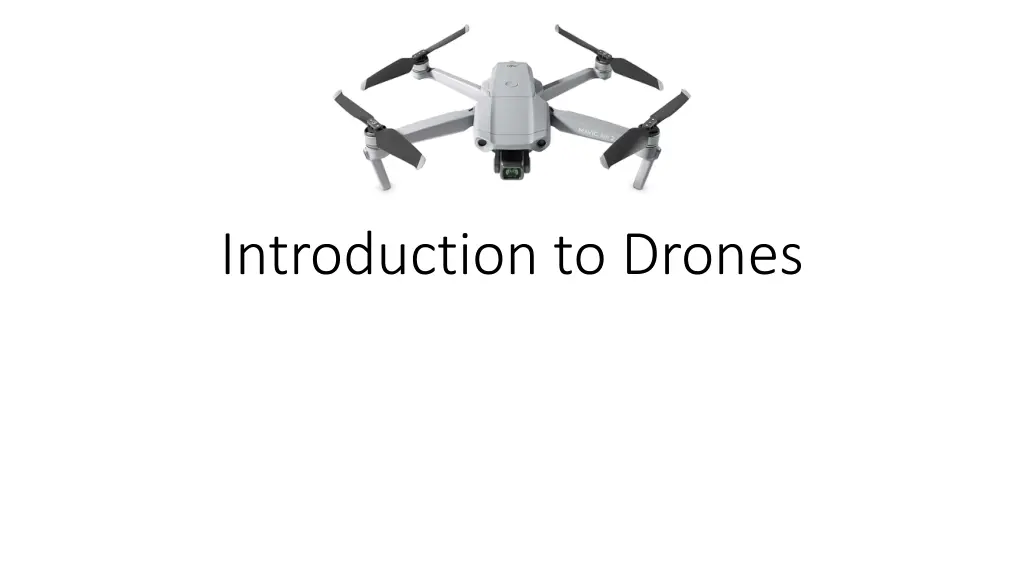
Understanding Drone Regulations and Pilot Requirements
Explore the world of drones through an overview of regulations, including Part 107 requirements, pilot prerequisites, and flight restrictions. Learn about capturing data, mission planning, and data analysis for efficient operation. Discover waivers available for UAS pilots and the essential pilot requirements for operating unmanned aircraft systems. Stay informed about the law governing recreational drone operations and the importance of following guidelines for safe drone flying.
Download Presentation

Please find below an Image/Link to download the presentation.
The content on the website is provided AS IS for your information and personal use only. It may not be sold, licensed, or shared on other websites without obtaining consent from the author. If you encounter any issues during the download, it is possible that the publisher has removed the file from their server.
You are allowed to download the files provided on this website for personal or commercial use, subject to the condition that they are used lawfully. All files are the property of their respective owners.
The content on the website is provided AS IS for your information and personal use only. It may not be sold, licensed, or shared on other websites without obtaining consent from the author.
E N D
Presentation Transcript
Overview Regulations (Part 107) Pilot Requirements Drone Requirements Flight Restrictions Capturing Data Mission Planning Stitching Analysis
Regulations Title 14 Code of Federal Regulations (CFR) Part 107 Regulates most drone operations There is an exception (49 U.S.C. 44809) that allows flying drones for recreational purposes (under certain conditions) without complying with Part 107. In order to fly under the statutory exception, you must comply with all portions of Section 44809, including flying your drone for recreational purposes..
Part 107 General Requirements Drones under 55 pounds Must have Remote Pilot Certificate (107.12) (or meet education exception) Drone is registered (107.13) Drone in safe condition to operate (107.15) Remote Pilot, Visual Observer in medical condition to operate (107.17) Cannot operate under the influence. < .04 and 8hours. (107.25) Remote Pilot in Command (rPIC) is responsible (107.19)
Part 107 General Requirements Cannot operate at night (with some exceptions) (107.29) Must maintain Visual Line of Sight (VLOS) (107.31) Yield to manned aircraft (107.37) May not fly over people (107.39) May not operate in Class B,C, or D airspace or Surface of Class E. (107.41) May not operate in the area of airports as to interfere with normal operations (107.43) May not operate in restricted airspace (107.45 and 107.47) Preflight check required (107.49)
Waivers (for UAS pilots) Some restrictions may be waived 107.25* Operation from a moving vehicle or aircraft 107.29 Operation at Night 107.31* Visual line of sight aircraft operation 107.33 Visual observer 107.35 Operation of multiple small unmanned aircraft systems 107.37(a) Yielding the right of way 107.39 Operation over human beings 107.41 Operation in certain airspace 107.51 Operating limitations for small unmanned aircraft 107.145 Operations Over Moving Vehicles
Pilot Requirements Unmanned Aircraft Systems (UAS) remote pilot Certificate Test (Part 61 + Part 107) $150 at testing center Online test (for holders of Part 61 license) Recreational Pilot TRUST (about 30 minute training) The Exception for Limited Operation of Unmanned Aircraft (USC 44809) is the law that describes how, when, and where you can fly drones for recreational purposes. Following these rules will keep people, your drone and our airspace safe: Educational Uses
Drone Requirements Weight Classes Under .55 pounds .55 to 55 pounds Registration All drones must be registered, except those that weigh 0.55 pounds or less (less than 250 grams) and are flown exclusively under the Exception for Recreational Flyers. Drones registered under part 107 may be flown for recreational purposes as well as under part 107. Drones registered under the Exception for Recreational Flyers cannot be flown for Part 107 operations. Information Needed to Register Physical address and mailing address (if different from physical address) Email address Phone number Make and model of your drone Specific Remote ID serial number provided by the manufacturer (if applicable) Credit or debit card ($5/3 years)
Drone Requirements Label Your Drone The FAA requires that you mark all drones with your registration number before you fly them. Must be maintained in a condition that is legible. Must be affixed to the small unmanned aircraft by any means necessary to ensure that it will remain affixed for the duration of each operation. Must be legibly displayed on an external surface of the small unmanned aircraft. Remote Identification and Your Drone Remote ID is the ability of a drone in flight to provide identification and location information that can be received by other parties. (Similar to aircraft transponder or ADS-B.) Beginning September 16, 2023, all drone pilots required to register their drone must operate their aircraft in accordance with the remote ID rule for pilots, which gives drone owners sufficient time to upgrade their aircraft. Drone manufacturers have until September 16, 2022 to produce drones with built-in standard remote ID.
Flight Restrictions Basics 400 AGL (above ground level) Line of sight No Night Flight Recreational vs. Part 107 License Waivers (of Part 107 regulations) Airspace authorization Temporary Flight Restrictions (TFR) Fires Special Events
Part 107 vs Recreational Flyers Recreational Flyers Fly only for recreational purposes (enjoyment). Follow the safety guidelines of an FAA-recognized Community Based Organization (CBO). Note: The FAA has not yet begun officially recognizing CBOs. See Advisory Circular 91-57B. Keep your drone within the visual line of sight or use a visual observer who is co-located (physically next to) and in direct communication with you. Give way to and do not interfere with manned aircraft. Fly at or below 400' in controlled airspace (Class B, C, D, and E) only with prior authorization by using LAANC or DroneZone. Fly at or below 400 feet in Class G (uncontrolled) airspace. Note: Flying drones in certain airspace is not allowed. Classes of airspace and flying restrictions can be found on our B4UFLY app or the UAS Facility Maps webpage. Take The Recreational UAS Safety Test (TRUST) and carry proof of test passage. About 30 minutes online Have a current registration, mark your drones on the outside with the registration number and carry proof of registration with you. Do not operate your drone in a dangerous manner. For example: Do not interfere with emergency response or law enforcement activities. Do not fly under the influence of drugs or alcohol. Part 107 flyer Required to fly for hire or business Pass an exam covering (107.73) Supervise another person manipulating the controls Have a current registration, mark your drones on the outside with the registration number and carry proof of registration with you. Can apply for airspace authorization or rule waivers (ex. night flight)
The Educational Exception There is also a statutory provision (P.L. 115-254, Section 350, as amended by P.L. 116-283, Section 10002) that clarifies that education and research uses of drones for educational (and research) purposes can be operated under the rules for recreational flyers. Comply with recreational pilot (TRUST) and drone requirements.
A Case for Part 107 Greater knowledge is required Background is useful for instruction Options exist to operate in more airspace and ask for waivers Could also perform commercial activity
Mapping (data collection) The most common use in Ag Three basic operations: Missing planning Data capture Stitching and Analysis
Mission Planning (software) Determine the study area Locate hazards and obstacles Check the airspace Layout the flight lines Determine altitude and overlap (commonly 70-80%) This determines the number of images. Determine time (for battery life)
Data Capture (control software) Check flying conditions (ex. wind, clouds) Pre-flight the drone Execute the mission Download the images
Stitching and Analysis (software) Stitching will combine individual images into one. Analysis Visual (color image) VARI A ratio of red and green bands. Simple RGB sensor NDVI the most common in Ag Requires Near Infrared sensor Ratio of red to Near IR
Ideas for Activities Have student take the TRUST test. (then laminate their cards ;-) Plan a general mission using Google Maps. Pick a spot, scout the area for hazards (make a checklist). Do a pre-flight check on a drone. Field check data previously collected. Look for causes. This works well with recreation fields (lawn). Take single images and analyze. Plan missions using software like DroneDeploy or Dronelink. Fly planned missions Stitch images and analyze using software like DroneDeploy or WebODM
Costs (very general idea) Drone a good quadcopter $400-$1500 Drone with Near IR sensor - $2500+ Mapping Software: $50 up. Subscriptions $1000/year (likely will stitch too) Stitching Software Free to $$$
Mission Planning Example Dronelink https://app.dronelink.com/mike-spiess
Resources & Questions http://agedweb.org/drone

